
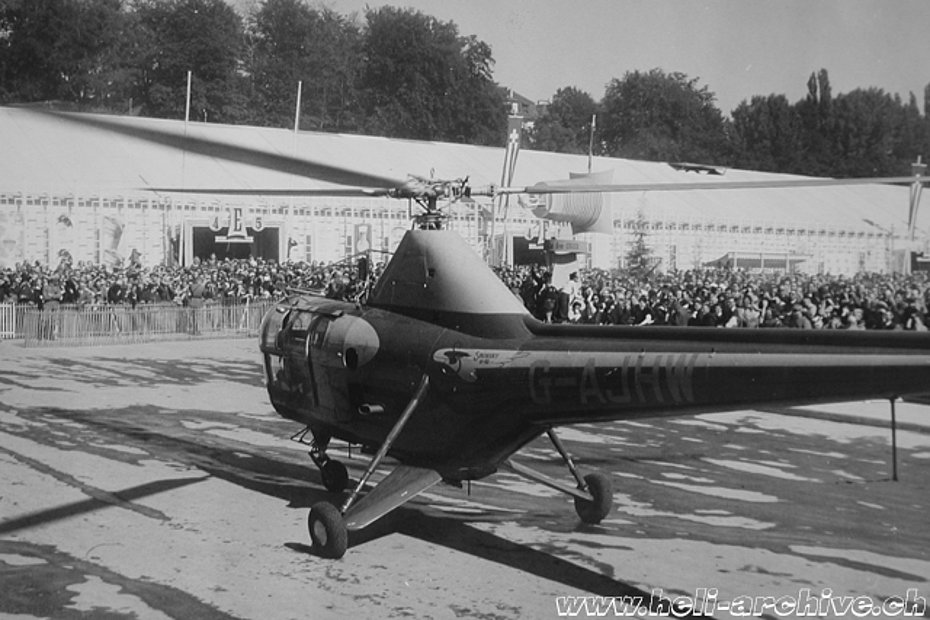
1940's - The helicopters arrive in Switzerland
In Switzerland the first helicopter was officially presented near Zürich on October 14, 1947. It was the Bell 47B G-AKCX registered in England used for a series of demonstrations observed by a large audience. The following year a bigger helicopter, a Sikorsky S-51 also registered in England (G-AJHW), capable to transport three passengers or lift an equivalent weight, was again used to test the helicopter abilities. The pilot Alan Bristow used it to transport mail bags, passengers and freights or for SAR simulations. The trials were organized in various Swiss cities, such as Zürich, Berne and Lausanne. It was clear from the beginning that the helicopter could be used for several purposes of public utility. Its sole problem, or better its main problem, was the extreme high price (360'000 CHF for a Sikorsky S-51).

Despite these difficulties there were people who decided to invest their money in the new invention and start this new type of business.
The first helicopter company was Air Import based in Lucerne. The young company, founded in 1948, was already active in the aviation sector as the official distributor of some airplane builders. Moreover, it had a fleet of light airplanes used for passengers and school flights.
The choice of the helicopter was at that time limited (or extremely limited) if we consider the selling price. The company of Lucerne purchased a second-hand Hiller 360 for a sum of 120'000 CHF. This model was in fact the cheapest on the market and performed better than the Bell 47, its direct competitor. The Hiller 360 HB-XAI began to fly by the end of August 1949 piloted by Albert Villard, the first Swiss helicopter pilot. Despite the difficulties (among them, for example, a general lack of experience, the limited performances of the helicopter, the high costs for the spare parts and the maintenance, etc.) Air Import survived. Initially the Hiller 360 was used for passenger flights and demonstrations. Everywhere it landed the helicopter was surrounded by a large audience. Air Import decided to take advantage of this popularity to promote not only its activities but also other commercial products. The helicopter was therefore transformed in an advertising tool and was equipped with large labels with the names of the products. Some customers, as for example the Tobler chocolate company, built mock-ups of their products which were placed on both sides of the cabin. Thanks to these contracts Air Import expanded. Another rentable job for the helicopter was aerial spray of cultures with chemical products. This kind of activity was done not only in Switzerland but even abroad, especially in Germany and Holland.
In the beginning, the Lucerne-based company had to deal with numerous difficulties such as high operating costs, frequent maintenance work, the limited performance of its helicopters, etc., but then slowly managed to establish itself.
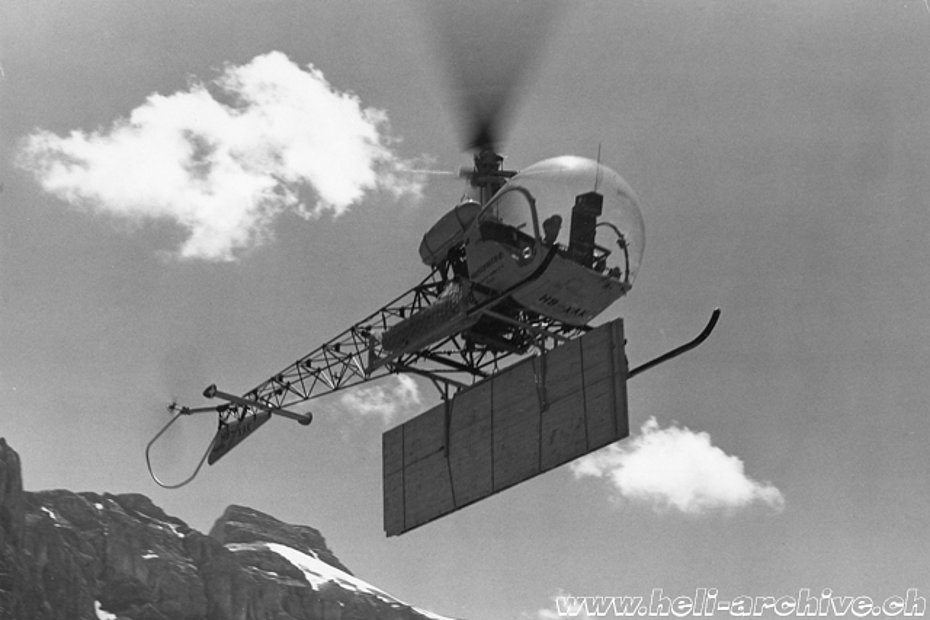
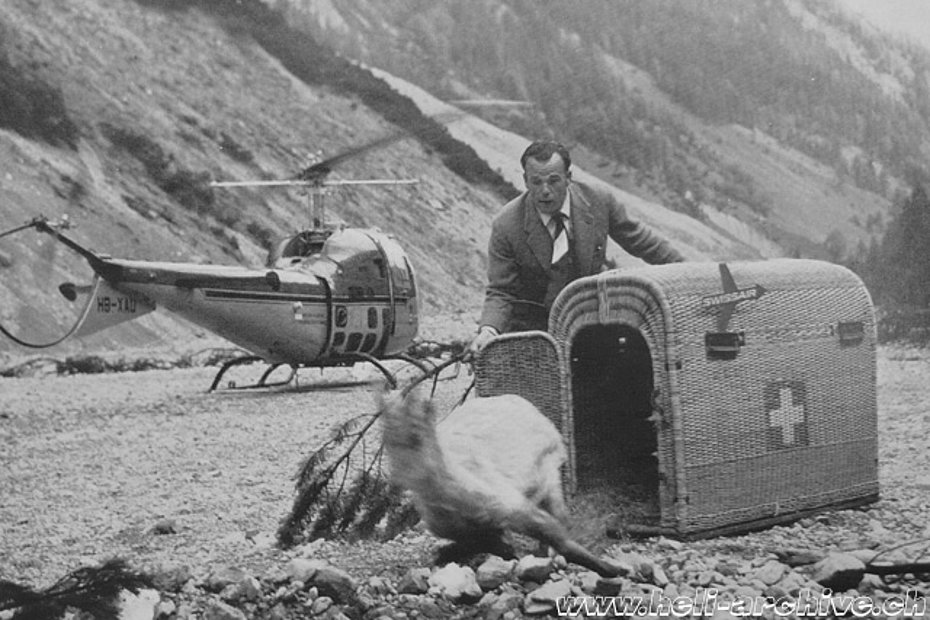
1950s - The "struggle for the survival"
The privileged situation of Air Import of being the only Swiss helicopter company ended soon. On August 25, 1952 in Berne the "Stiftung zur Förderung des Schweizerischen Luftverkehrs" (foundation for the development of the Swiss aerial traffic) directed by prof. A. von Zeerleder, organized a conference opened to all potential investors interested in the development of the rotary-wing. In the following months a group of representatives begun to collect information about helicopters and their potential uses. A small group of delegates went in England to visit some builders and helicopter operators. Everybody was in fact conveinced that the helicopter could do a large number of duties considered of national interest.
In the meantime, among the main Swiss public and private companies it was possible to find the founds to invest in the new helicopter company "Schweizerische Helikopter AG" (which later changed its name simply into Heliswiss Ltd.), born officially on April 17, 1953. Walo Hörning was chosen as president of the board of directors and Hermann Aeschbacher as director of the company. After a series of comparisons among the different models, by the end of the summer the newly founded company bought in France a second-hand Bell 47G for a sum of 180'000 CHF.
Unfortunately shortly after its arrival in Switzerland, the helicopter was destroyed in an accident in which the pilot Raymond Gerger and his two passengers lost their life. Despite the tragic loss the following spring Heliswiss bought another helicopter and restarted its flying activity.
The new company was confronted with several problems (the same already described above). Slowly Heliswiss expanded and in 1956 it absorbed Air Import (there was not enough aerial work for two companies!). Even without a direct national competitor, it was not easy for the young company to survive. Each year ended in fact with a financial loss. Without public founds Heliswiss probably couldn’t have continued its activity.
The fleet initially composed by two Bell 47G expanded with the acquisition of newer models such as the (Agusta-)Bell 47G2 more powerful and consequently more suitable to be used for transportation in the Swiss alpine chain.
From the Spring of 1957 the difficult situation of Heliswiss was further put to a severe test. In fact the Valaisan pilot Hermann Geiger, famous for his spectacular alpine aerial rescues using a Piper Super Cub, received, as chief-pilot of the Swiss Air Rescue Guard (SARG), the brand new Bell 47J Ranger HB-XAU. The helicopter, a gift from the Coop shop chain, was officially presented to the public on February 28, in Muttenz near Basle by Joseph (Joe) Mashmann, test-pilot of the Bell helicopter company. Much later Geiger obtained from SARG the permission to use the helicopter for commercial operations such as the trasportation of people and building materials.

1960s - The boom in air transport by helicopters
In Valais and in other Swiss alpine regions, the requests for aerial transports increased, and this despite the fact that, at that time, transport fares were extremely high. In many situations the helicopter was the only mean capable to satisfy the requests of the customers. Moreover, in many cases (for example for the construction of alpine huts) aerial transport was faster and more economic if compared, for example, with the construction of roads or cableways, or the traditional transportation using packhorse. To respond adequately to the increasing requests, Heliswiss opened new bases (in Samedan/GR, Magadino/TI, Erstfeld/UR, etc.).
An important step ahead was done in 1963 when Heliswiss put into service its two new Agusta-Bell 204B. These modern turbine powered helicopters were able to lift up to 1'000 kg or 9 passengers in their large cabins.
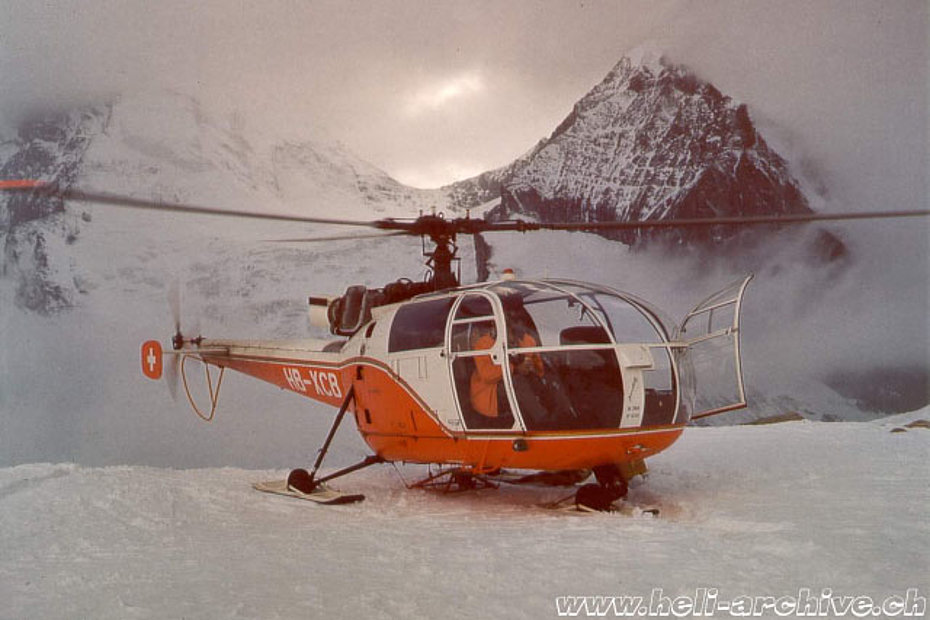

Despite some initial troubles connected with the functioning of the turbine, these helicopters proved to be the ideal tool for the aerial work.
Unfortunately one of them was lost the following year in an accident in which the French pilot Jacques Pascal Castaing was fatally injured.
Until the first half of the 1960s the situation in the civil helicopter market remained unchanged. During the Summer of 1965 two new helicopter companies were founded, one in the Canton Ticino and the other in Valais.
The first was set up by the entrepreneur Claudio Valsesia. At the beginning the company, which had bought an Agusta-Bell 47G3B-1, operated from the old airfield of Bellinzona where EliTicino (this was the name officially given to the company in 1967) had built a small heliport.
The second company was Air Glaciers, founded officially on August 1, in Sion. The latter carried out, under a new name and with a new group of investors but with the same pilots, the aerial activity of the Valaisan Section of the Swiss Aero Club (VSSAC), using the helicopters Bell 47J Ranger and Agusta-Bell 47J3B-1. Air Glaciers was the first Swiss civil company to put in service the French SE 3160 Alouette III.
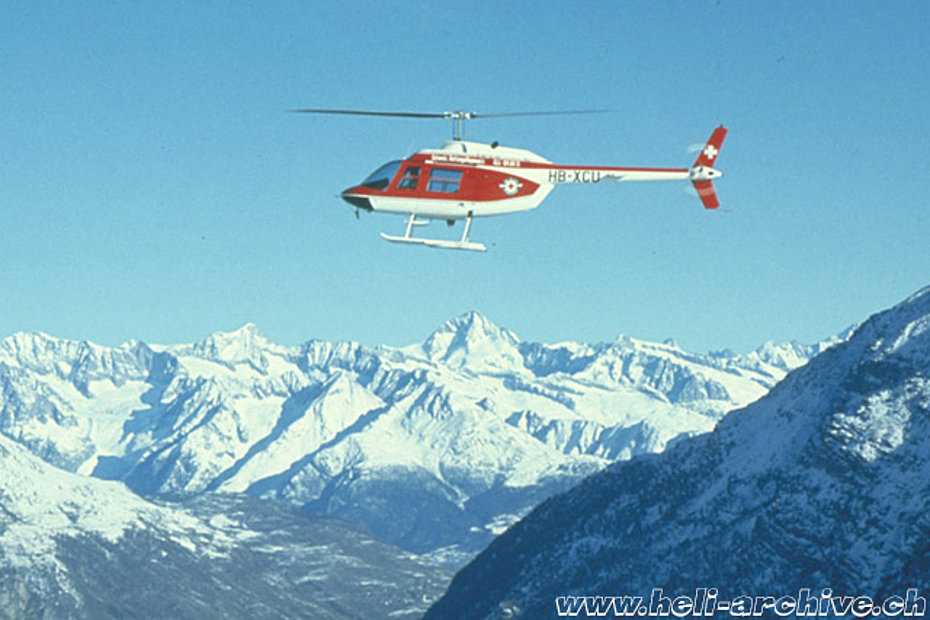

By the Spring of 1968 the offer of aerial transportation by helicopter grew with the arrival of Air Zermatt. Based in the homonym alpine resort, the newly founded company bought the Agusta-Bell 206A Jet Ranger HB-XCL.
In the following years new companies and new bases were created. The use of the helicopter for aerial services expanded rapidly on the Swiss territory.
Initially SARG rented helicopters from civil companies for its SAR missions. In 1969 with the money raised SARG put in service the Agusta-Bell 206A Jet Ranger HB-XCU, its first turbine-powered helicopter.
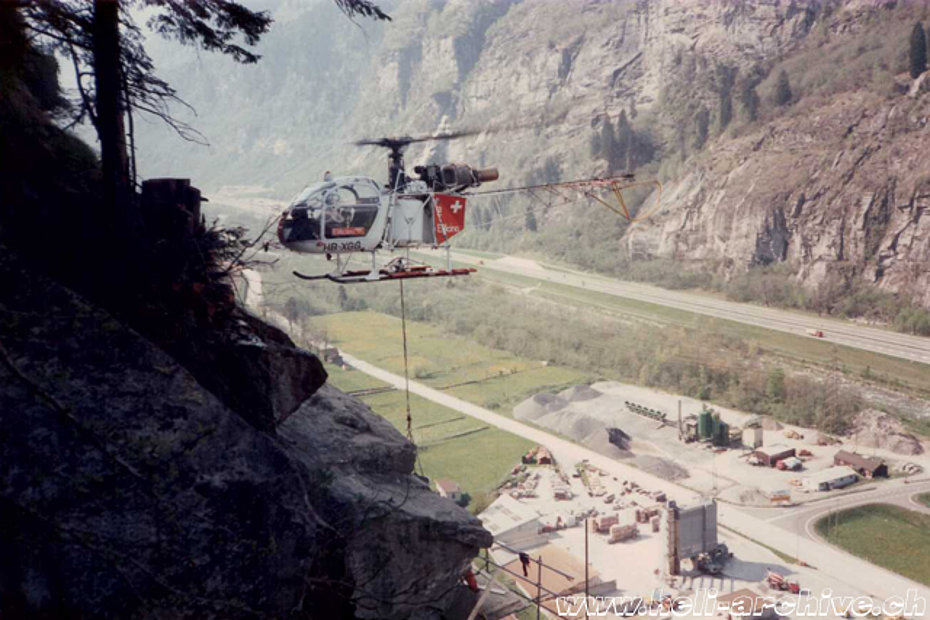
1970s - The arrival of the SA 315B Lama
During the 1970s other helicopter types appeared on the market. Some of them had great commercial success as for example the SA 315B Lama, the Alouette III or the Hughes 300 and 500 series. The first mentioned was particularly appreciated and was nicknamed "the flying mule" because of its excellent performance, especially at high altitude.
In 1972 Heliswiss put in service the powerful Sikorsky S-58T, capable to lift up to 2'000 kg supended on the hook or 13 passengers in its large cabin. However, this model was not particularly suited to be used for aerial transports in the mountains. In fact some years later it was replaced by the Bell 214B-1 BigLifter, even more powerful and with a greater lift capacity, which was very appreciated by its pilots.
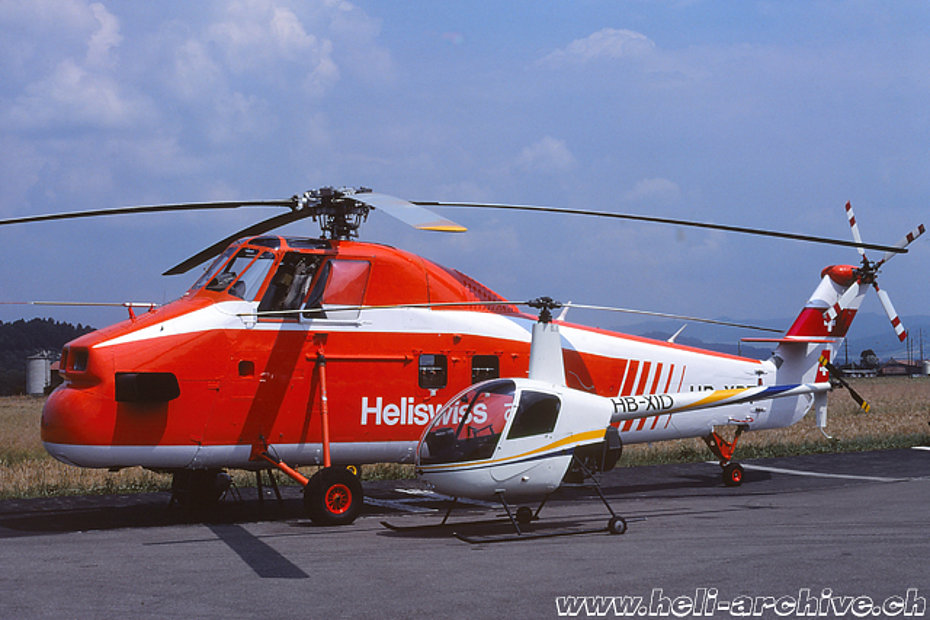
In those years the most used helicopter for training purposes was the Bell 47, but there were other models, such as, for example, the Hughes 269 or the Enstrom F-28. Despite the high costs to obtain the helicopter license (which is notoriously much more expensive than the fixed-wing licence) many people decided to become private pilots only for their pleasure and fun, as it often happens with the members of an aero-club.
New helicopter companies start their activity such as Bohag, Heli-Linth, Fuchs Helikopter and Air Grischa.
VIP and managers unveil the pleasure to travel with a helicopter, and for these reasons helicopter builders designed new models, which were fast and comfortable, as for example the well known Agusta A109 or the Bell 206L Long Ranger.
The 1980s - David and Goliath
Since the beginning of the 1980s a new French helicopter began its diffusion on the market. The model concerned is the AS 350 Ecureuil (also known as Squirrel or Astar). The initial version introduced in Switzerland was the AS 350B powered with a Turboméca Arriel 1B. Due to its limited engine power the Ecureuil could not compete against the SA 315B Lama (its direct "antagonist") as a flying crane. However the flying companies appreciated its other qualities, as for example, the possibility to carry 5 passengers in its large cabin, its greater cruising speed, its lower fuel consumption, its reduced maintenance costs, etc.
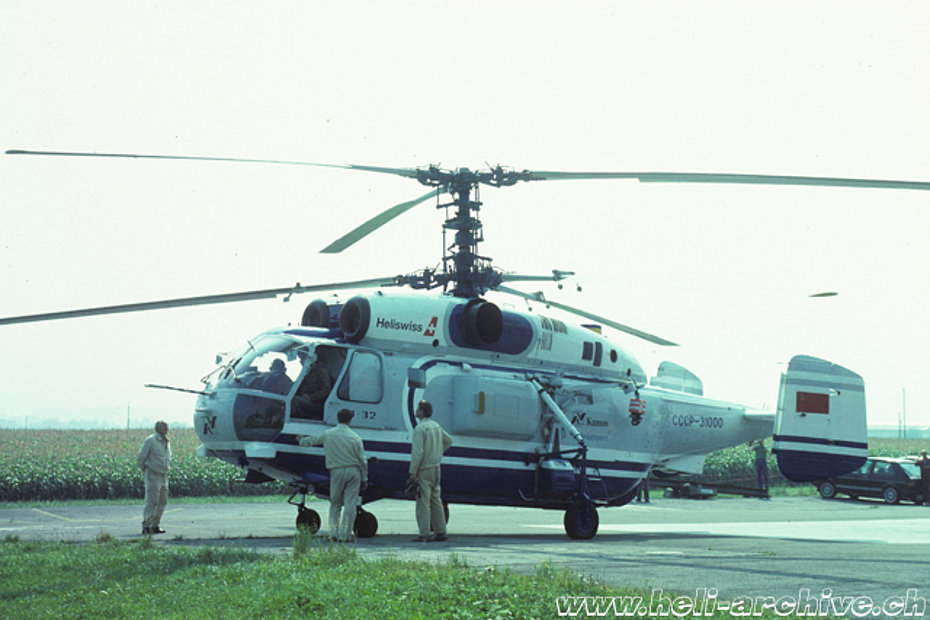
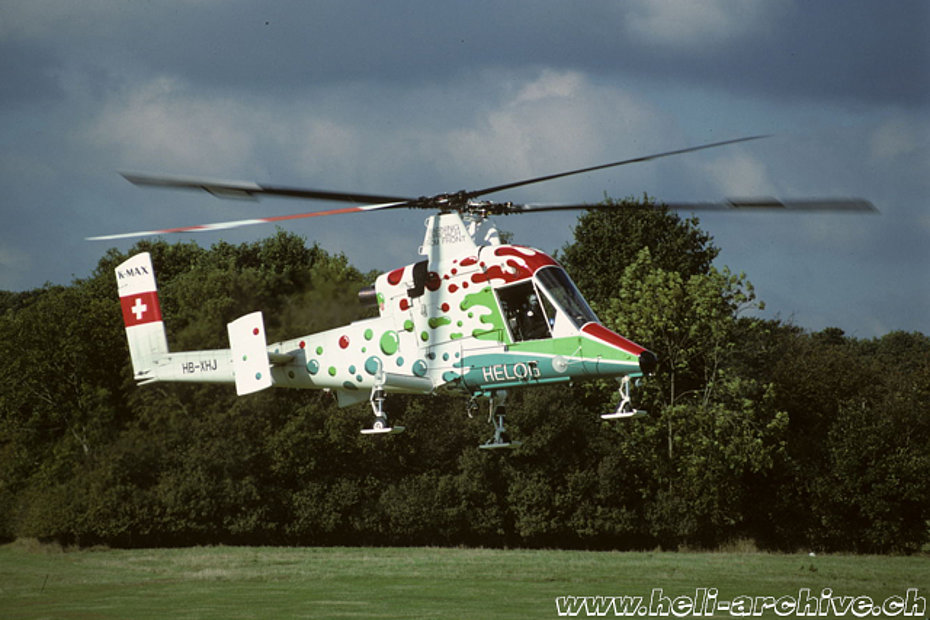
New helicopter companies were set up. Among these are for example, Heli-Bernina of Samedan, or Heli-TV founded in the Canton Fribourg which was later transferred to the south of the Alps. The Swiss Confederation bought the French SA 365N Dauphin which has been used to transport ministers and other politicians.
The 1990s - New aerial cranes
REGA decided to replace its Alouette III and BO-105 fleet with the Agusta A109K2. The new twin-turbine Italian helicopter is faster and more powerful than its predecessors. It officially started its service in 1992.
Heliswiss tests the Russian helicopter Kamov KA-32T. The helicopter proves to be a true "mule of the air" and is capable to lift external loads up to 5'000 kg. After a period of trials the company purchases the helicopter which is now used in all Europe.
In 1995 the neo-founded Helog purchases the Kaman K-1200 K-Max, a helicopter designed exclusively to be used as an aerial crane. The HB-XHJ of Helog is the first of this type to be registered in Europe.

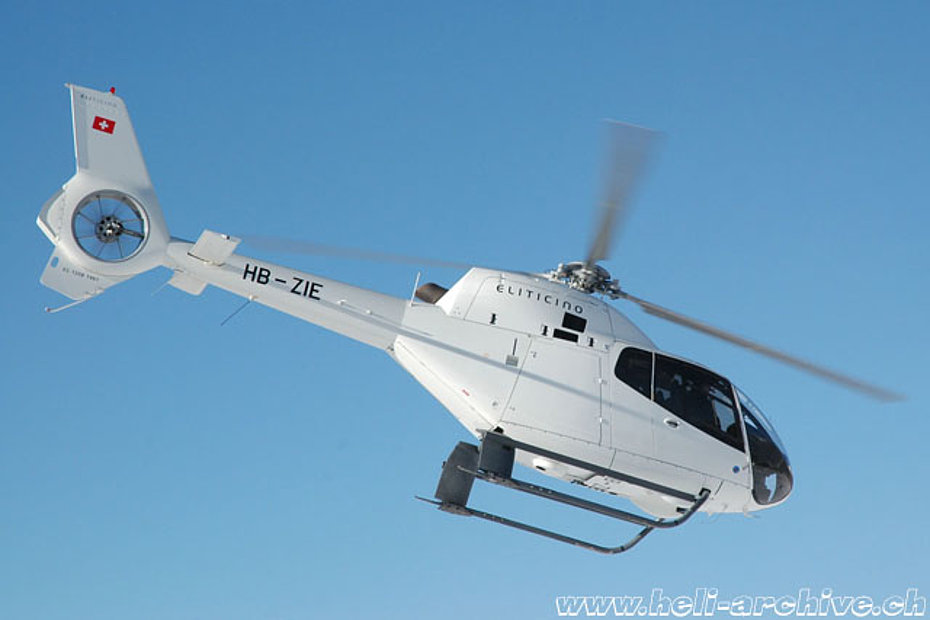
The first EC 120B Colibri is introduced in Switzerland. This elegant five seater light monoturbine is produced in France by Eurocopter obtains a great commercial success. Another novelty of this decade is the apparition of the so called "kit helicopter" such as the Rotorway Exec 90/162, the Elisport CH-7 and much later the Revolution Mini 500.
The first decades of the third millenium
In few years several dozens of new helicopters are registered. The Swiss helicopters fleet extends considerably. Among these there are numerous Robinson R-22, R-44, EC 120B Colibri and other French models such as the EC-130B4 and EC-135 T2. For VIP and executive flights the operators chose fast and comfortable models such as for example the AS 365 Dauphin, the new Agusta A109E and 109S, Bell 430 or Mc Donnell 900 and 902 Explorer. A great novelty is the 15-seat Anglo-Italian Agusta-Westland 139. Four of these helicopters are registered in Switzerland but are operated abroad by the Aga Khan Foundation. Others are in service in Switzerland.
Several helicopter companies for the transport of passengers and goods replaces their SA 315B Lama with the new AS 350B3/B3+/B3e.


Consequently numerous "historical" Lamas diseappear from the Swiss register and are sold abroad. To mention that some of them were flown nonstop for over 35 years. The last will be the SA 315B Lama HB-XRD in service with Heli-TV.
Rega purchases six EC-145 and in 2009 starts to replace its Agusta A109K2 fleet with the newer Agusta AW109SP Da Vinci.
Starting in 2011, numerous Guimbal Cabri G2 aircraft are imported in Switzerland and used mainly for flight training replacing the Schweizer 300C.
In 2012 Heliswiss, Air Grischa, Bohag, Rhein-Helikopter, Heli-Gotthard and Eliticino merged together to create the new helicopter operator Swiss Helicopter AG.
In summer 2018, Héli-Alpes SA is the first operator in Switzerland to put the new Bell 505 (HB-ZYN) into service.

